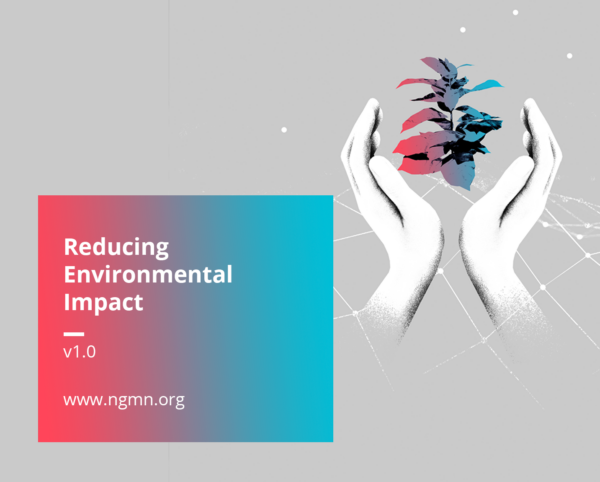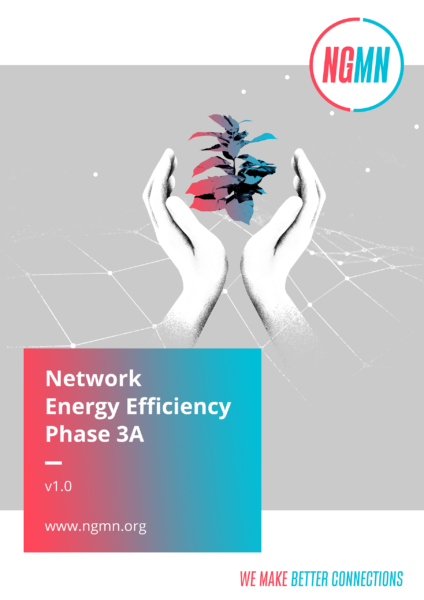Dusseldorf, Germany, 23 January 2024. Today the NGMN Alliance (NGMN) issued a new publication “Reducing Environmental Impact: Best Practices and Recommendations” providing guidance to the mobile telecommunication industry on how to manage and reduce its environmental footprint in relation to greenhouse gas emissions, materials usage, energy and water.
“Over the last three decades the mobile industry has provided enormous economic and societal benefits to billions of users worldwide. We must however continue this success story in a way that is sustainable and that minimises the industry’s environmental footprint”, said Arash Ashouriha, Chairman of the NGMN Alliance Board and SVP Group Technology at Deutsche Telekom. “I am proud that the mobile industry has come together – in NGMN – to share best practice and enable the whole industry to address this vitally important issue“, he added.
Laurent Leboucher, Member of the NGMN Alliance Board, Group CTO and SVP Orange Innovation Networks at Orange added: “Environmental impact is not just limited to carbon emissions – use of rare materials, plastics and water footprint all need to be considered, managed and reduced. Orange is proud to have collaborated with our industry peers to develop this NGMN publication – a publication which will provide significant value to the wider industry”.
This latest NGMN publication highlights how operators can assess the lifecycle environmental impact of their network infrastructure in terms of emissions, energy, and water footprint. The report identifies the use of Lifecycle Assessment in relation to energy and emissions and demonstrates how to calculate water footprint. Based on these tools, strategies are outlined for how to manage and reduce the environmental impact by, for example, selecting and using materials in the design of network infrastructure that have lower emissions and energy requirements and by for example switching to data centre cooling methods that use less water.
“The vision of the NGMN Alliance is to provide impactful guidance to achieve innovative and affordable mobile telecommunication services for the end user with a particular focus on Mastering the Route to Disaggregation, Green Future Networks, as well as 6G”, said Anita Doehler, CEO at NGMN Alliance. “The mobile industry is working very hard to reduce its environmental footprint. However, no single stakeholder – operator or vendor – can do this alone. We must work together, collaborate for the sake of developing new solutions, share best practices, and learn from each other to make this happen. This new publication is an excellent example of the value NGMN provides to its membership and to the wider industry”, she added.
The publication was developed with input from across the industry – with NGMN Partners representing operators, vendors, and research institutes.
The publication can be downloaded from here.
Collaboration is key to driving the industry’s most important topics such as NGMN’s strategic pillars: Operating Disaggregated Networks, Green Future Networks, and 6G. NGMN therefore invites all parties across the entire value chain to join the Alliance in this important endeavour.
Further information and all publications of the NGMN Alliance can be found on their website at ngmn.org
About NGMN Alliance
The NGMN Alliance (NGMN) is a forum founded by world-leading Mobile Network Operators and open to all Partners in the mobile industry. Its goal is to ensure that next generation network infrastructure, service platforms and devices will meet the requirements of operators and ultimately will satisfy end user demand and expectations. The vision of NGMN is to provide impactful industry guidance to achieve innovative, sustainable and affordable mobile telecommunication services for the end user with a particular focus on Mastering the Route to Disaggregation / Operating Disaggregated Networks, Green Future Networks and 6G, whilst continuing to support 5G’s full implementation.
NGMN seeks to incorporate the views of all interested stakeholders in the telecommunications industry and is open to three categories of participants/NGMN Partners: Mobile Network Operators (Members), vendors, software companies and other industry players (Contributors), as well as research institutes (Advisors). NGMN invites all parties across the entire value chain to join the Alliance in these important endeavours.









